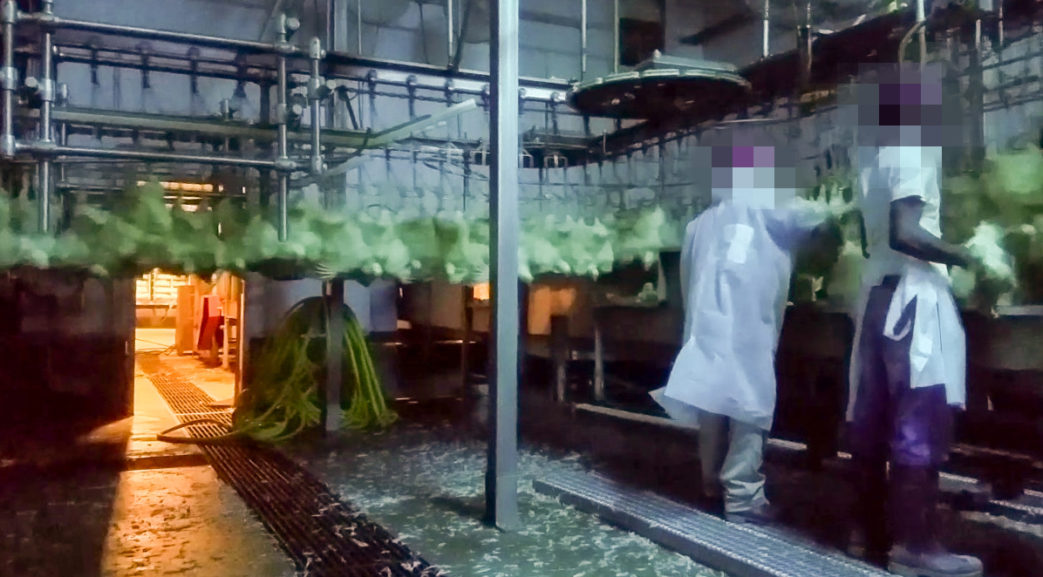In November of 2018, a gut-wrenching video by a Compassion Over Killing investigator revealed to millions of consumers the truth behind the USDA’s high-speed chicken slaughter program, which provides plants with waivers allowing them to increase already dangerously fast kill line speeds from 140 to 175 birds per minute—nearly three birds every second.
A requirement of this waiver is that plants must meet certain criteria — including the ability to maintain food safety. But despite this requirement, alarming questions of food safety continue following multiple salmonella outbreaks in various industries. And the government has no plans to revoke the waivers!
POLITICO reported this month that hundreds of individual poultry plants have failed food safety tests, including dozens of plants that have or are eligible for high-speed waivers.
However, according to POLITICO, the USDA’s Food Safety and Inspection Service (FSIS) says that these failures don’t necessarily mean plants will lose their high-speed waivers. In fact, according to FSIS Administrator Carmen Rottenberg, the USDA is now even considering rulemaking to remove the waiver system and increase slaughter caps to the staggering rate of 175 birds per minute across the board later this year, despite the fact that an industry-wide line speed increase has already been proposed and rejected by the agency–twice.
High-speed slaughter poses dangers to consumers, workers, and animals. As line speeds increase it becomes more and more difficult to ensure food safety and detect contamination when it occurs–especially since the plants in the USDA’s New Poultry Inspection System program have plant employees conducting inspections, leading to fewer government inspectors on the floor. This means drastically reduced government oversight and accountability.
In one of the most dangerous industries in the United States, these recklessly fast line speeds also pose grave complications for workers, who are already vulnerable to terrible injuries. At higher speeds, risk of injury can only go up–plus, workers are already often pressured to work long hours with few or no breaks (sometimes not even bathroom breaks) to keep up with the fast pace.
All of these issues with high-speed bird slaughter are passed on to the consumer.
The public deserves to know the truth about how its food is made. But under high-speed slaughter programs, transparency and safety standards are only decreasing. Despite the continuous exposure COK’s investigations bring of horrors of high-speed slaughter, the USDA continues to drive it forward, in reckless disregard of consumer concern and widespread public opposition.
ACT NOW: Join us and nearly 100,000 people today in urging the USDA to put the brakes on reckless high-speed slaughter of birds–to protect animals, workers, and the health of consumers by signing and sharing our petition.
Then, take the next step and voice your opposition to high-speed slaughter of pigs, too!

